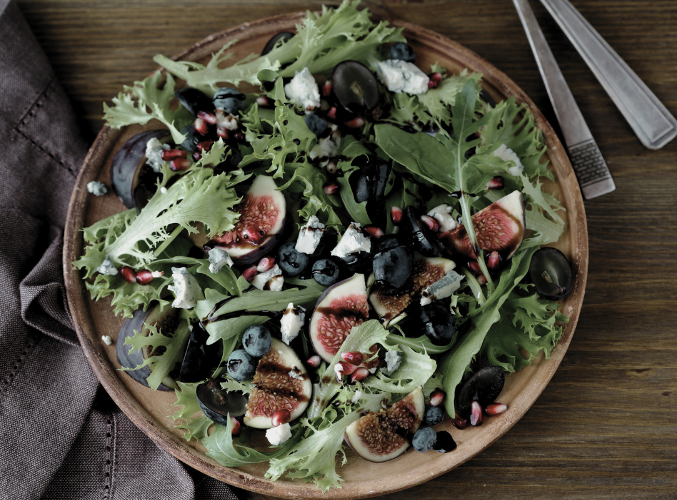

Take a Bite Out of Life: How to Stop Being an Adult Picky Eater
Summary
Reflection Questions
Journal Prompt
Food is not just sustenance. It’s our gateway to culture, a means of social connection, and a source of pleasure. Yet, for many adults, the simple act of enjoying a meal can become a challenge when picky eating habits persist from childhood into adulthood. Whether it’s avoiding certain textures, flavors, or entire food groups, being an adult picky eater can limit culinary experiences, hinder nutrition, and affect social interactions. However, the good news is that it’s never too late to expand your palate and rediscover the joys of diverse cuisines. In this article, we will explore the reasons behind adult picky eating, its consequences, and most importantly, effective strategies to help you take a bite out of life and stop being an adult picky eater. Of course, we are not talking about people who occasionally eat bland comfort foods or avoid certain ingredients due to medical restrictions. As always, we encourage readers (including the adult picky eaters in our network) to seek professional health if they present disordered eating symptoms.
Understanding Adult Picky Eating


Adult picky eating can have various root causes, some of which can be traced back to childhood experiences. In many cases, individuals who were exposed to limited food variety or faced food-related challenges during childhood may develop picky eating habits as adults.
Sensory sensitivities also play a role, where certain textures, tastes, or smells can elicit aversive reactions. Cultural influences can shape food preferences and aversions, as individuals may grow up with specific dietary norms and traditions. Additionally, habitual behaviors developed over time can contribute to adult picky eating, where individuals become accustomed to a restricted range of foods.
The Psychology Behind Food Aversions and Preferences
The psychology of adult fussy eating is a complex interplay of factors. Food aversions and preferences are often influenced by both genetic predispositions and learned behaviors. Psychological factors, such as anxiety or stress, can exacerbate food aversions, leading to avoidance of certain foods.
Social and environmental factors, including family dynamics and peer influences, also play a role in shaping food choices. Understanding the psychology behind picky eating involves recognizing the emotional and cognitive aspects that influence how individuals perceive and interact with food, ultimately contributing to their dietary habits and preferences.
The Consequences of Picking Eating Behaviors Compared to Open Eating Behaviors
Nutritional Deficiencies and Health Risks
Picky eating in adulthood can lead to nutritional deficiencies and health risks. When individuals consistently avoid a wide range of unfamiliar foods, they may fail to obtain essential nutrients, including vitamins, minerals, and dietary fiber. This deficiency can result in various health problems, such as weakened immune function, fatigue, digestive issues, and poor bone health. Over time, the lack of a balanced diet can contribute to the development of chronic conditions like heart disease, diabetes, and obesity.
Social and Dining Challenges


Picky eating in adulthood can pose significant social and dining challenges. Avoiding certain foods or food groups can limit dining options and make it challenging to enjoy meals with friends, family, or colleagues. Social gatherings, parties, and travel may become sources of stress rather than enjoyment for fussy eaters. Additionally, individuals with picky eating habits may feel self-conscious or embarrassed about their limited food preferences in social situations, which can lead to social isolation and anxiety.
The Impact on Relationships and Self-Esteem
The impact of picky eating on relationships and self-esteem can be substantial. Loved ones may struggle to understand or accommodate dietary restrictions, potentially leading to tension and conflict. Moreover, individuals with picky eating habits may experience feelings of frustration, guilt, or shame related to their food choices, which can erode self-esteem and self-confidence. Over time, these negative emotions may contribute to the development of anxiety or depression, further affecting one’s mental well-being.
When Does Picky Eating Become Disordered Eating?


We all have different eating behaviors and food limits. You might fall on the mild end of the picky eating spectrum or you might exhibit symptoms of disordered eating. Picky eating becomes disordered eating when it starts to significantly impact a person’s physical health, mental well-being, and overall quality of life.
Disordered eating is characterized by irregular or unhealthy eating patterns, often associated with extreme restrictions, obsessions about food, severe food neophobia, and an unhealthy focus on body weight and shape. It’s important to note that disordered eating is not limited to picky eating but can manifest in various ways.
When picky eating leads to severe nutritional deficiencies, it can result in health problems such as malnutrition, weakened immune system, and impaired growth (in children). Disordered eating can also lead to heightened emotional distress, including anxiety, guilt, shame, or depression related to food and eating habits.
Avoidance of social gatherings or events due to fear of encountering “unsafe” or non-preferred foods can lead to social isolation and negatively impact one’s relationships and overall well-being. Developing rigid and arbitrary food rules or rituals, such as specific eating sequences or excessive chewing, can be indicative of disordered eating patterns.
Constantly thinking about food, calories, or body weight and spending an excessive amount of time planning meals or avoiding certain foods can suggest disordered eating. When picky eating or constantly thinking about eating interferes with daily functioning, such as difficulty concentrating at work or school, physical health problems, or inability to enjoy social activities, it may be considered disordered eating.
As we will repeat several times throughout this article, it’s essential to seek professional help from a healthcare provider or mental health specialist if you or someone you know is experiencing disordered eating patterns. Early intervention can help prevent the progression of disordered eating into more severe eating disorders like anorexia nervosa, bulimia nervosa, or binge-eating disorder, which may require specialized treatment and support.
What is Selective Eating Disorder?
Selective Eating Disorder or food neophobia is often casually assigned to those who avoid unfamiliar food regularly. However, the American Psychiatric Association (APA) does not officially recognize a specific diagnosis called “Selective Eating Disorder” in its Diagnostic and Statistical Manual of Mental Disorders (DSM-5). The DSM-5 is the standard classification system for mental health disorders used by mental health professionals in the United States and many other countries.
However, the concept of selective eating or extreme picky eating is sometimes informally referred to as “Avoidant/Restrictive Food Intake Disorder” (ARFID) within the DSM-5. ARFID is a diagnosis used to describe individuals, including children and adults, who have extremely limited food preferences, avoid certain foods or food groups, and have a limited diet that may result in nutritional deficiencies or impair their daily functioning.
It’s important to note that while ARFID may encompass some cases of selective eating, not all picky eaters meet the criteria for this diagnosis. Diagnosis and treatment for selective eating or extreme picky eating are typically conducted by mental health professionals or dietitians who specialize in eating disorders or food-related challenges. If you or someone you know is experiencing difficulties related to selective eating, it is advisable to seek help from a healthcare professional for a proper evaluation and guidance on managing eating habits and related concerns.
How to Stop Being an Adult Picky Eater
Now, let’s list a few tricks and tools to help you stop being a picky eater. From exploring different cooking methods to gradually exposing yourself to unfamiliar foods, you can make the change!
#1 Identify the Root Causes


Exploring the reasons behind picky eating is a crucial first step in addressing this behavior. Take time to reflect on why you have specific food preferences and what might be influencing your eating habits. Understanding the underlying causes can help you develop strategies to expand your diet.
Picky eating can often be traced back to past experiences, cultural upbringing, or sensory sensitivities. Consider if childhood food-related experiences or cultural influences have shaped your food preferences. Some individuals may have heightened sensitivities to certain tastes, textures, or smells, which can impact their eating habits.
If your picky eating is severe and linked to selective eating disorders or other forms of disordered eating, it’s crucial to seek professional help. A therapist, registered dietitian, or eating disorder specialist can provide a comprehensive evaluation and tailored guidance to address the underlying issues and develop a healthier relationship with food. Their expertise can be instrumental in managing and overcoming disordered eating patterns.
#2 Expose Yourself Gradually


When aiming to expand your palate and overcome picky eating habits, it’s essential to approach the process gradually. Attempting to overhaul your eating habits overnight can be overwhelming and counterproductive. Instead, take small steps towards diversifying your diet. Begin by incorporating new foods or dishes into your meals at a pace that feels comfortable for you.
To effectively expand your food preferences, consider experimenting with one new food item at a time. Choose a food that you are curious about or willing to try, and incorporate it into your meals or snacks. Repeated exposure to the same food can play a vital role in increasing your tolerance and acceptance of unfamiliar flavors and textures. Over time, as you become more accustomed to the new item, you may find it easier to incorporate additional foods into your diet.
#3 Expand Your Palate


One effective way to expand your palate and embrace a wider range of foods is to explore different cuisines. Various cultures around the world offer unique flavors, spices, and ingredients that can introduce you to exciting new tastes. Be open to trying dishes from diverse culinary traditions, as this can help you discover flavors that appeal to your palate.
Visiting restaurants or markets from different cultures is another practical approach to broadening your food horizons. These establishments often feature authentic dishes and ingredients that may be unfamiliar to you. By exploring such places, you can encounter foods and flavors that you haven’t previously encountered in your regular diet. This firsthand experience can be an enjoyable way to introduce new elements into your culinary repertoire.
#4 Try Different Cooking Methods at Home


Cooking at home offers a valuable opportunity to have greater control over the ingredients and preparation methods used in your meals. When you prepare your own food, you can select the specific ingredients you want to incorporate and tailor them to your preferences. This control can be particularly advantageous when you’re working on expanding your palate because it allows you to experiment with different flavors and textures in a comfortable environment.
To ease into new flavors and ingredients, consider experimenting with recipes that incorporate both familiar and unfamiliar elements. Start with dishes that feature ingredients you already enjoy and gradually introduce new ones. This gradual approach can make the transition to unfamiliar flavors more manageable.
Over time, as you become more confident in your culinary skills, you can explore more complex recipes and ingredients, further broadening your palate. Cooking at home not only facilitates this exploration but also provides a sense of accomplishment and satisfaction in creating dishes that suit your evolving tastes.
#5 Make Small Changes First


Making small changes to familiar recipes is an effective strategy for expanding your palate while maintaining a sense of familiarity. Consider modifying your favorite dishes to include healthier or different ingredients. For instance, you can sneak vegetables into dishes you enjoy, such as adding finely grated carrots to spaghetti sauce or incorporating spinach into a smoothie. These subtle alterations allow you to gradually introduce new flavors and textures into your meals without overwhelming your taste buds.
Gradually reducing the intake of sugar, salt, and unhealthy fats in your diet can contribute to a heightened appreciation of natural flavors. These additives can sometimes overpower the subtle tastes of ingredients. By reducing your reliance on these flavor enhancers, you can develop a more refined palate and a greater sensitivity to the inherent flavors of foods.
Start by using less sugar in your coffee or tea, reducing the amount of salt in recipes, and replacing saturated fats with healthier options like olive oil. Over time, your taste buds will adjust, allowing you to savor the natural nuances of foods more fully.
#6 Be Open-Minded


Maintaining a positive and open-minded attitude is key to expanding your palate. Approach the process of trying new foods with curiosity and a willingness to embrace unfamiliar flavors. Instead of relying on preconceived notions or biases, be open to the possibility of discovering new tastes that you may genuinely enjoy. Cultivating this mindset can make the experience of trying different foods more enjoyable and less intimidating.
It’s important not to judge a food solely by its appearance or smell. Taste can often be quite different from what initial sensory impressions suggest. A food that looks or smells unfamiliar may surprise you with its deliciousness once you take a bite. By overcoming any initial reservations and giving unfamiliar foods a chance, you may discover new culinary delights that can enrich your eating experiences and broaden your palate.
#7 Eat With Others Often


Socializing around food can be a delightful way to expand your palate. When you dine with friends or family members who have diverse tastes, it can create a supportive and encouraging environment for trying new dishes.
Sharing a meal with others allows you to explore a variety of foods and flavors together, making the experience more enjoyable and less intimidating. Conversations about food and shared culinary experiences can also provide valuable insights and recommendations for trying different cuisines and dishes, further enriching your culinary journey.
#8 Seek Professional Help if Your Picky Eating Does Not Improve
If you find that your picky eating habits are causing health issues or significantly limiting your diet to the point where it affects your well-being, it’s advisable to seek professional help. Consulting with a registered dietitian or therapist who specializes in eating disorders or food aversions can provide you with expert guidance and support.
These professionals can conduct a thorough assessment of your eating habits, identify any underlying issues or challenges, and work with you to develop a personalized plan for overcoming picky eating. Their expertise can be instrumental in addressing the root causes of your picky eating and helping you make positive changes to improve your dietary habits and overall health.
Final Thoughts on Changing Your Picky Eating Habits


Remember that change takes time, and setbacks are part of the process, but with patience, perseverance, and a willingness to try new flavors, you can overcome your picky eating habits. By taking these steps to expand your palate, you not only improve your overall health but also enhance your social interactions and savor the richness of life’s diverse culinary offerings.
So, take that first bite, savor the flavors, and let your journey to becoming a more adventurous eater be a vibrant part of your life story.








